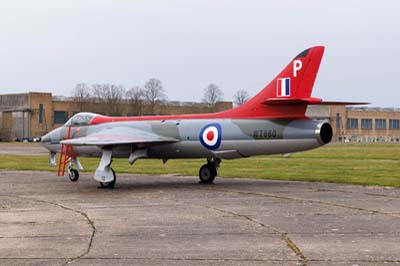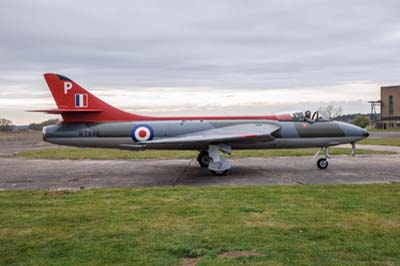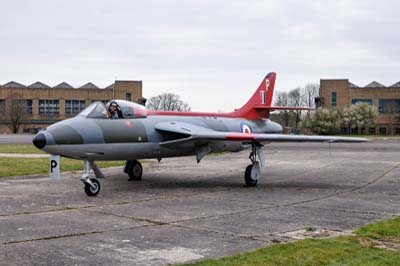West Raynham Hunter
Norfolk
March 22, 2025
|
The former Royal Air Force station, RAF West Raynham, is located 2 miles west of the village. The airfield opened during May 1939 and was used by RAF Bomber Command during the World War Two with the loss of 86 aircraft. During World War Two the following aircraft operated from RAF West Raynham; Bristol Blenheim, Boeing Flying Fortress, Curtiss Tomahawk, North American Mitchell, Douglas Boston III and the de Havilland Mosquito.
From 1945 until 1962, RAF West Raynham was the Central Fighter Establishment. Post war operations included the; Gloster Meteor F.8, de Havilland Vampire, de Havilland Venom, Gloster Javelin FAW.8, Hawker Hunter FGA.9, Hawker Siddeley Kestrel and English Electric Canberra.
The station closed in 1994, although the Ministry of Defence (MoD) retained it as a strategic reserve. Having lain derelict since closure, the station was deemed surplus to requirements by the MoD in 2004 and two years later was sold to the Welbeck Estate Group who resold the entire site in October 2007. |
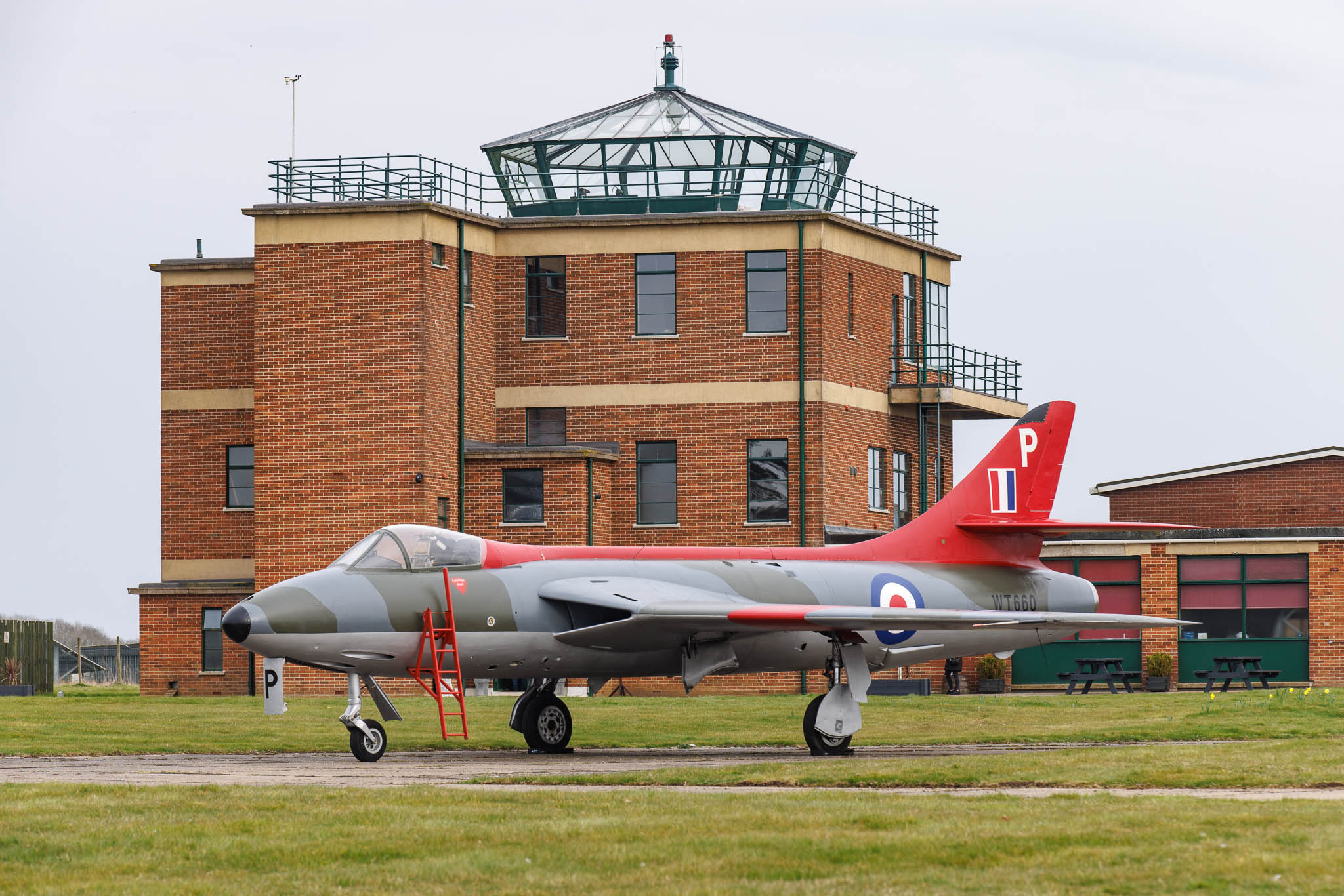 |
| Hawker Hunter F.1 (WT660 later 7421M). It was delivered to the RAF and assigned to the Day Fighter Leader School (DFLS) at RAF West Raynham between 1955 and 1957 before its transfer to 229 OCU. It was soon displayed as gate guard at 14 Maintenance Unit, RAF Carlisle until 1999. From there it was purchased by the Highland Aircraft Preservation Society for display at the Highland Aviation Museum at Inverness Airport in Scotland following its restoration between 1999 and 2008. Following the museum's closure in 2019 WT660 was put up for disposal. In October 2020 WT660 was acquired by the Jon and Shelly Booty and transported to West Raynham, her original home. She has had a variety of damage repaired, been reassembled, painted in her old DFLS scheme and is now displayed next to the tower. |
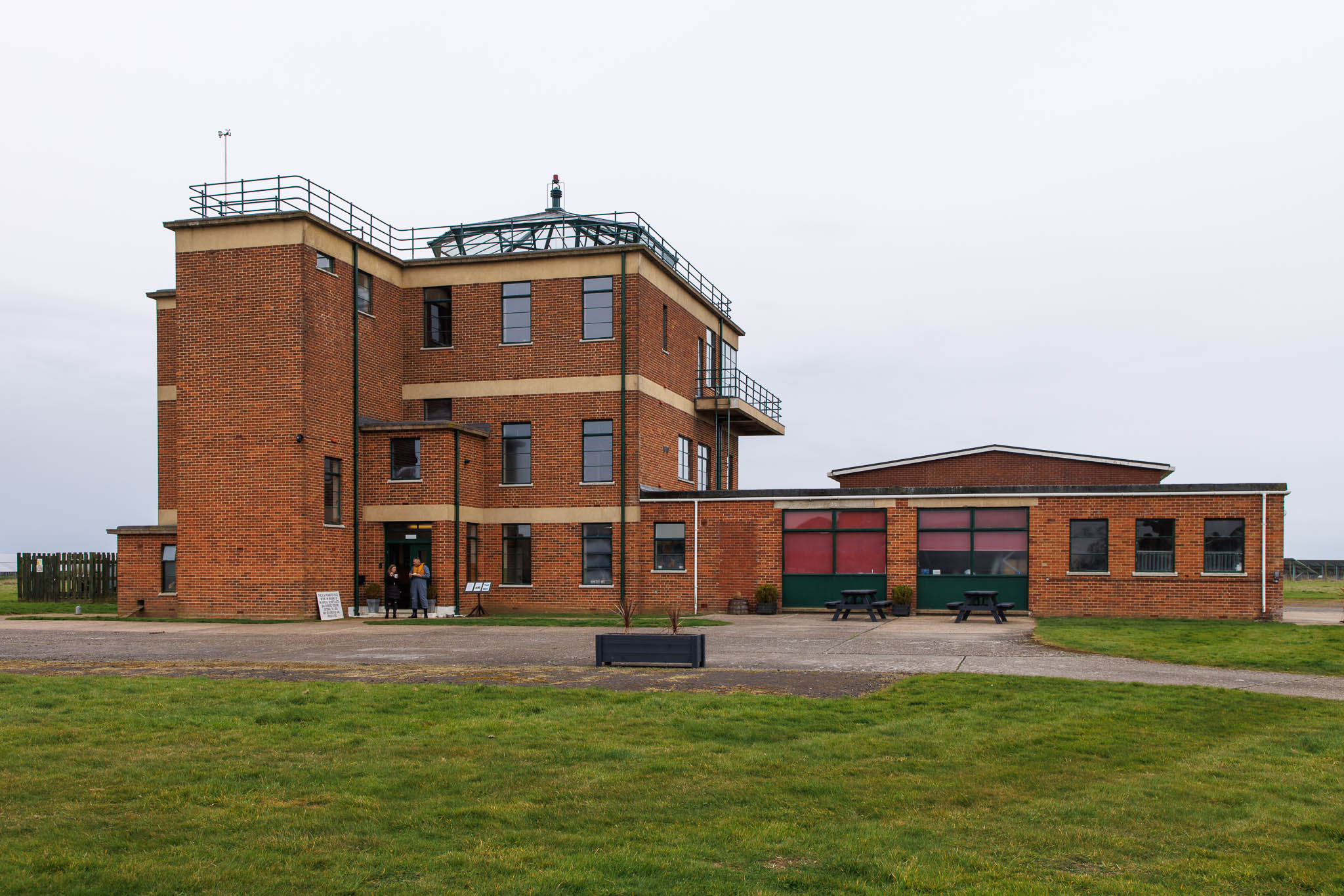 |
| RAF West Raynham's Very Heavy Bomber (VHB) air traffic control tower is one of four built from 1945 as part of a modernisation program for bomber airfields. These towers were designed to accommodate the larger, more complex aircraft that were emerging at the end of World War Two. The basic structure was a three-storey building with a single-storey annexe. They were the first RAF buildings to be designed with an airfield control room, later to be called the visual control room (VCR) at the top of the tower. The four VHB control towers were built, located at RAF West Raynham, RAF Marham, RAF Sculthorpe and RAF Lakenheath which was demolished in 2009. |
Left to right: Following the Grade II Listing of the VHB Air Traffic Control Tower, ten other structures on the former airfield were nationally designated as Grade II Listed buildings in March 2023. These were the original Watch Office (Building 72), all four C-type hangars, Station HQ/Operations Block, Parachute Store, Armoury and blast walls and two Ready Use Pyrotechnic Stores (Buildings 64 and 77). Historic England's descriptions of these designated heritage assets refer to RAF West Raynham as one of the best preserved RAF expansion scheme bomber bases.
Hangar 1 still bears the scars of a German raid during World War Two. |
Left to right: Jon Booty (standing on his control tower) and his wife Shelly moved into the listed control tower in November 2016, which was Grade II listed in June 2021, are still lovingly restoring it. It had been left derelict for 25 years. Jon Booty ex Royal Electrical and Mechanical Engineers (REME) is confident he can turn the 32 rooms into their home. During the COAP/TLE photo-shoot Jon was very happy to tow his Hunter to locations to provide varied backdrops.
The remains of the original air traffic control tower located between the hangars. |
| Hawker Hunter F.1 (WT660 later 7421M) of the Central Fighter Establishment. It has been restored in the markings of the Day Fighter Leader School from when it was based at RAF West Raynham during its brief service life between 1955 and 1957. |
| Hawker Hunter F.1 (WT660 later 7421M). |
| Hawker Hunter F.1 (WT660 later 7421M). |
| Hawker Hunter F.1 (WT660 later 7421M). |
| Hawker Hunter F.1 (WT660 later 7421M). |
| Hawker Hunter F.1 (WT660 later 7421M). |
| Hawker Hunter F.1 (WT660 later 7421M). |
| Left to right: Two re-enactors (David Coppin and Carl) were utilsed to enable these images to be produced. |















